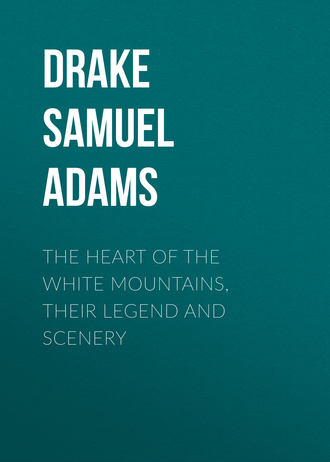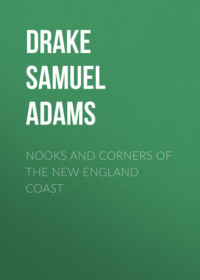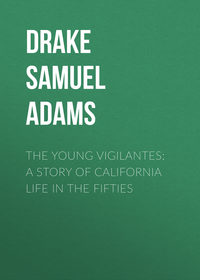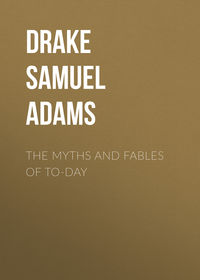 полная версия
полная версияThe Heart of the White Mountains, Their Legend and Scenery
*King’s Ravine.– The path branches from the Mount Adams path about 1½ miles from Lowe’s. The bowlders in the Ravine are reached without great difficulty. From the bowlders up the head-wall, and through the gate-way, the climb is arduous; and the way is not very distinctly marked. From the gate-way, Madison and the several peaks of Adams may be reached.
Mount Madison.– There are several routes up Madison, but the best is probably that leading up the ridge from “Dolly” Copp’s, on the Old Pinkham Road. The climb is tedious, and the path somewhat overgrown. The Mountain Club will probably clear and keep this path in good condition.
*Bridal Veil Falls.– Path starts from Horace Brooks’s, on the road from Franconia to Easton – 2 to 3 miles from Sugar Hill and Franconia Village. It follows an old road across the clearings to Copper-mine Brook, thence by the brook to the foot of the Falls. Distance, 2½ miles from Brooks’s. Walking easy.
The path to the Flume on Mount Kinsman leads from the same highway about a mile beyond Brooks’s.
Mount Lafayette.– The bridle-path begins near the Profile House, turning Eagle Cliff, and crossing over to the main ridge. It leads nearly to the summit of the ridge, thence across the col by the lakes, and up the main peak. Distance, 3½ to 3¾ miles.
Mount Cannon.– The path enters the forest near the cottages in front of the Profile House. The summit is reached by a steep climb of 1½ miles. The Cannon Rock is a short distance down the mountain-side, to the left of the path as it emerges from the forest; the forehead rock of the Profile can be reached by bearing down the mountain diagonally to the right from Cannon Rock until the edge of the cliff is reached. It is a hard scramble to the latter.
Black Mountain, Waterville.– The new path leaves the highway 2 miles below Greeley’s, near Drake’s Brook. It runs near the edge of the ravine of Drake’s Brook, crosses the ridge between Noon and Jennings’ Peaks – to each of which a branch path leads – thence up the northerly slope of the main summit. Distance from the road to the summit is 3¼ miles. The views are very fine, and the climb easy for ordinary walkers.
Osceola.– Path leaves the Greeley-pond path beyond the saw-mill above Greeley’s, bearing to the left. Ascent easy. Distance, about 4 miles.
Tecumseh.– Path branches from the Osceola path at the crossing of the west branch of Mad River, ⅞ of a mile from Greeley’s. The grade is easy, except for a short distance near the summit. Distance from Greeley’s, 3 miles.
Tri-Pyramid.– The great slide on Tri-Pyramid may be reached from Greeley’s by a path across the pasture to the right from the rear of the house, thence about 1½ miles through fine old woods to a deserted clearing known as Beckytown. From here the stream may be followed by clambering over the débris of the slide nearly 2 miles to the base of the South Peak. The summit is reached by climbing to the apex of the slide, thence bearing up to the right a short distance through low woods.
*Thornton-Warren Path.– This path was built to enable visitors in the Upper Pemigewasset Valley or in Warren to cross from one locality to the other, avoiding the long détour via Plymouth. It starts from the Profile House stage-road at the junction of the Tannery road, in West Thornton, crosses Hubbard Brook at this point, and passes over a long stretch of pasture until the woods are reached. At this point, and at all doubtful points, signs have been placed. For much of the distance the path follows Hubbard Brook, and passes out through the Notch between Mounts Kineo and Cushman to an old road-way leading to clearings on Baker’s River, near the mountain-houses at the foot of Mount Moosilauke.
Distance from the stage-road to the road-way in Warren, 8 miles. A permanent camp has been built half-way on Hubbard Brook.
A trail has been spotted from a point in the path about 1 mile north of the camp to the summit of Kineo.
1
So called from the fishing-weirs of the Indians. The Indian name was Aquedahtan. Here is the Endicott Rock, with an inscription made by Massachusetts surveyors in 1652.
2
No tradition attaches to the last three peaks. Passaconnaway was a great chieftain and conjurer of the Pennacooks. It is of him the poet Whittier writes:
Burned for him the drifted snow,Bade through ice fresh lilies blow,And the leaves of summer glowOver winter’s wood.This noted patriarch and necromancer, in whose arts not only the Indians but the English seemed to have put entire faith, after living to a great age, was, according to the tradition, translated to heaven from the summit of Mount Washington, after the manner of Elias, in a chariot of fire, surrounded by a tempest of flame. Wonnalancet was the son and successor of Passaconnaway. Paugus, an under chief of the Pigwackets, or Sokokis, killed in the battle with Lovewell, related in the next chapter.
3
Something has since been done by the Appalachian Club to render this part of the ascent less hazardous than it formerly was.
4
The Saco has since been bridged, and is traversed with all ease.
5
The sequel to this strange but true story is in keeping with the rest of its horrible details. Perpetually haunted by the ghost of his victim, the murderer became a prey to remorse. Life became insupportable. He felt that he was both shunned and abhorred. Gradually he fell into a decline, and within a few years from the time the deed was committed he died.
6
Dr. Jeremy Belknap relates that, on his journey through this region in 1784, he was besought by the superstitious villagers to lay the spirits which were still believed to haunt the fastnesses of the mountains.
7
This house stood just within the entrance to the Notch, from the north, or Fabyan side. It was for some time kept by Thomas J., one of the famous Crawfords. Travellers who are a good deal puzzled by the frequent recurrence of the name “Crawford’s” will recollect that the present hotel is now the only one in this valley bearing the name.
8
A portion of the slide touching the house, even moved it a little from its foundations before being stopped by the resistance it opposed to the progress of the débris.
9
I have since passed over the same route without finding those sensations to which our inexperience, and the tempest which surrounded us, rendered us peculiarly liable. In reality, the ridge connecting Mount Pleasant with Mount Franklin is passed without hesitation, in good weather, by the most timid; but when a rod of the way cannot be seen the case is different, and caution necessary. The view of this natural bridge from the summit of Mount Franklin is one of the imposing sights of the day’s march.
10
The remains of this ill-fated climber have since been found at the foot of the pinnacle. See chapter on Mount Washington.
11
This analogy of belief may be carried farther still, to the populations of Asia, which surround the great “Abode of Snow” – the Himalayas. It would be interesting to see in this similarity of religious worship a link between the Asiatic, the primitive man, and the American – the most recent, and the most unfortunate. Our province is simply to recount a fact to which the brothers Schlaginweit (“Exploration de la Haute Asie”) bear witness:
“It is in spite of himself, under the enticement of a great reward, that the superstitious Hindoo decides to accompany the traveller into the mountains, which he dreads less for the unknown dangers of the ascent than for the sacrilege he believes he is committing in approaching the holy asylum, the inviolable sanctuary of the gods he reveres; his trouble becomes extreme when he sees in the peak to be climbed not the mountain, but the god whose name it bears. Henceforth it is by sacrifice and prayer alone that he may appease the profoundly offended deity.”
12
Sullivan: “History of Maine.”
13
Field’s second ascension (July, 1642) was followed in the same year by that of Vines and Gorges, two magistrates of Sir F. Gorges’s province of Maine, within which the mountains were believed to lie. Their visit contributed little to the knowledge of the region, as they erroneously reported the high plateau of the great chain to be the source of the Kennebec, as well as of the Androscoggin and Connecticut rivers.
14
It also occurs, reduced to Agiochook, in the ballad, of unknown origin, on the death of Captain Lovewell. One of these was, doubtless, the authority of Belknap. Touching the signification of Agiochook, it is the opinion of Dr. J. Hammond Trumbull that the word which Captain Gyles imperfectly translated from sound into English syllables is Algonquin for “at the mountains on that side,” or “over yonder.” “As to the generally received interpretations of Agiockochook, such as ‘the abode of the Great Spirit,’ ‘the place of the Spirit of the Great Forest,’ or, as one writer prefers, ‘the place of the Storm Spirit,’” says Dr. Trumbull, “it is enough to say that no element of any Algonkin word meaning ‘great,’ ‘spirit,’ ‘forest,’ ‘storm,’ or ‘abode,’ or combining the meaning of any two of these words, occurs in ‘Agiockochook.’ The only Indian name for the White Hills that bears internal evidence of genuineness is one given on the authority of President Alden, as used ‘by one of the eastern tribes,’ that is, Waumbekketmethna, which easily resolves itself into the Kennebec-Abnaki waubeghiket-amadinar, ‘white greatest mountain.’ It is very probable, however, that this synthesis is a mere translation, by an Indian, of the English ‘White Mountains.’ I have never, myself, succeeded in obtaining this name from the modern Abnakis.”
15
Here is what Douglass says in his “Summary” (1748-’53): “The White Hills, or rather mountains, inland about seventy miles north from the mouth of Piscataqua Harbor, about seven miles west by north from the head of the Pigwoket branch of Saco River; they are called white not from their being continually covered with snow, but because they are bald atop, producing no trees or brush, and covered with a whitish stone or shingle: these hills may be observed at a great distance, and are a considerable guide or direction to the Indians in travelling that country.”
And Robert Rogers (“Account of America,” London, 1765) remarks that the White Mountains were “so called from that appearance which is like snow, consisting, as is generally supposed, of a white flint, from which the reflection is very brilliant and dazzling.”
16
Captivity of Elizabeth Hanson, taken at Dover, New Hampshire, 1724.
17
No Yankee girl need be told for what purpose spruce gum is procured; but it will doubtless be news to many that the best quality is worth a dollar the pound. Davis told me he had gathered enough in a single season to fetch ninety dollars.
18
I use the name, as usually applied, to the whole mountain. In point of fact, the Dome is not visible from the Notch.
19
The guide knew no other name for the larger bird than meat-hawk; but its size, plumage, and utter fearlessness are characteristic of the Canada jay, occasionally encountered in these high latitudes. I cannot refrain from reminding the reader that the cross-bill is the subject of a beautiful German legend, translated by Longfellow. The dying and forsaken Saviour sees a little bird striving to draw the nail from his bleeding palm with his beak:
“And the Saviour spoke in mildness:‘Blest be thou of all the good!Bear, as token of this moment,Marks of blood and holy rood!”“And the bird is called the cross-bill;Covered all with blood so clear.In the groves of pine it singethSongs like legends, strange to hear.”20
Peabody River is said to have originated in the same manner, and in a single night. It is probable, however, that as long as there has been a valley there has also been a stream.
21
Since the above was written, a deplorable accident has given melancholy emphasis to these words of warning. I leave them as they are, because they were employed by the very person to whom the disaster was due: “The first accident by which any passengers were ever injured on the carriage-road, from the Glen House to the summit of Mount Washington, occurred July 3d, 1880, about a mile below the Half-Way House. One of the six-horse mountain wagons, containing a party of nine persons – the last load of the excursionists from Michigan to make the descent of the mountain – was tipped over, and one lady was killed and five others injured. Soon after starting from the summit the passengers discovered that the driver had been drinking while waiting for the party to descend. They left this wagon a short distance from the summit and walked to the Half-Way House, four miles below, where one of the employés of the Carriage-road Company assured them that there was no bad place below that, and that he thought it would be safe for them to resume their seats with the driver, who was with them. Soon after passing the Half-Way House, in driving around a curve too rapidly, the carriage was overset, throwing the occupants into the woods and on the rocks. Mrs. Ira Chichester, of Allegan, Michigan, was instantly killed, her husband, who was sitting at her side, being only slightly bruised. Of the other occupants, several were more or less injured. The injured were brought at once to the Glen House, and received every possible care and attention. Lindsey, the driver, was taken up insensible. He had been on the road ten years, and was considered one of the safest and most reliable drivers in the mountains.”
22
A stone bench, known as Willis’s Seat, has been fixed in the parapet wall at the extreme southern angle of the road, between the sixth and seventh miles. It is a fine lookout, but will need to be carefully searched for.
23
Benjamin Chandler, of Delaware, in August, 1856.
24
Dr. B. L. Ball’s “Three Days on the White Mountains,” in October, 1855.
25
Considering the pinnacle of Mount Washington as the centre of a circle of vision, the greatest distance I have been able to see with the naked eye, in nine ascensions, did not probably much exceed one hundred miles. This being half the diameter, the circumference would surpass six hundred miles. It is now considered settled that Katahdin, one hundred and sixty miles distant, is not visible from Mount Washington.
26
The highest point, formerly indicated by a cairn and a beacon, is now occupied by an observatory, built of planks, and, of course, commanding the whole horizon. It is desirable to examine this vast landscape in detail, or so much of it as the eye embraces at once, and no more.
27
One poor fellow (Private Stevens) did die here in 1872. His comrade remained one day and two nights alone with the dead body before help could be summoned from below.
28
It was for a long time believed that the summit of Mount Washington bore no marks of the great Glacial Period, which the lamented Agassiz was the first to present in his great work on the glaciers of the Alps. Such was the opinion of Dr. C. T. Jackson, State Geologist of New Hampshire. It is now announced that Professor C. H. Hitchcock has detected the presence of transported bowlders not identical with the rocks in place.
29
In going to and returning from the ravine, I must have walked over the very spot which has since derived a tragical interest from the discovery, in July, 1880, of a human skeleton among the rocks. Three students, who had climbed up through the ravine on the way to the summit, stumbled upon the remains. Some fragments of clothing remained, and in a pocket were articles identifying the lost man as Harry W. Hunter, of Pittsburg, Pennsylvania. This was the same person whom I had seen placarded as missing, in 1875, and who is referred to in the chapter on the ascent from Crawford’s. A cairn and tablet, similar to those erected on the spot where Miss Bourne perished, had already been placed here when I last visited the locality, where the remains had so long lain undiscovered in their solitary tomb. An inscription upon the tablet gives the following details: “Henry W. Hunter, aged twenty-two years, perished in a storm, September 3d, 1874, while walking from the Willey House to the summit. Remains found July 14th, 1880, by a party of Amherst students.” The place is conspicuous from the plain, and is between the Crawford Path and Tuckerman’s. By going a few rods to the left, the Summit House, one mile distant, is in full view. This makes the third person known to have perished on or near the summit of Mount Washington. Young Hunter died without a witness to the agony of his last moments. No search was made until nearly a year had elapsed. It proved ineffectual, and was abandoned. Thus, strangely and by chance, was brought to light the fact that he sunk exhausted and lifeless at the foot of the cone itself. I can fully appreciate the nature of the situation in which this too adventurous but truly unfortunate climber was placed.
30
A log-hut has been built near the summit of Mount Clinton since this was written. It is a good deed. But the long miles over the summits remain as yet neglected. Had one existed at the base of Monroe, it is probable that one life, at least, might have been saved. It is on the plain that danger and difficulties thicken.
31
Kancamagus, the Pennacook sachem, led the Indian assault on Dover, in 1689.
32
This name was given to his picture of the great range, in possession of the Prince of Wales, by Mr. George L. Brown, the eminent landscape-painter. The canvas represents the summits in the sumptuous garb of autumn.
33
The true source of the Connecticut remained so long in doubt that it passed into a by-word. Cotton Mather, speaking of an ecclesiastical quarrel in Hartford, says that it was almost as obscure as the rise of the Connecticut River.
34
This orthography is of recent adoption. By recent I mean within thirty years. Before that time it was always Moosehillock. Nothing is easier than to unsettle a name. So far as known, I believe there is not a single summit of the White Mountain group having a name given to it by the Indians. On the contrary, the Indian names have all come from the white people. That these are sometimes far-fetched is seen in Osceola and Tecumseh; that they are often puerile, it is needless to point out. Moosehillock is probably no exception. It is not unlikely to be an English nickname. The result of these changes is that the people inhabiting the region contiguous to the mountain do not know how to spell the name on their guide-boards.
35
Speaking of legends, that of Rubenzal, of the Silesian mountains, is not unlike Irving’s legend of Rip Van Winkle and the Catskills. Both were Dutch legends. The Indian legends of Moosehillock are very like to those of high mountains, everywhere.
36
In the valley of the Aar, at the head of the Aar glacier, in Switzerland, is a peak named for Agassiz, who thus has two enduring monuments, one in his native, the other in his adopted land. The eminent Swiss scientist spent much time among the White Mountains.
37
Such, for example, as the Hon. J. G. Sinclair, Isaac Cruft, Esq., and ex-Governor Howard of Rhode Island.
38
The twin Percy Peaks, which we saw in the north, rise in the south-east corner of Stratford. Their name was probably derived from the township now called Stark, and formerly Percy. The township was named by Governor Wentworth in honor of Hugh, Earl of Northumberland, who figured in the early days of the American Revolution. The adjoining township of Northumberland is also commemorative of the same princely house.
39
The greater part of the ascent so nearly coincides, in its main features, with that into Tuckerman’s, that a description would be, in effect, a repetition. To my mind Tuckerman’s is the grander of the two; it is only when the upper section of King’s is reached that it begins to be either grand or interesting by comparison.
40
The road up the Rigi, in Switzerland, was modelled upon the plans of Mr. Marsh.
41
Dr. Timothy Dwight.
42
Rev. Benjamin G. Willey.
43
The greatest angle of inclination is twelve feet in one hundred.
44
Samuel Adams at the feet of John Adams is not the exact order that we have been accustomed to seeing these men. Better leave Samuel Adams where he stands in history – alone.
45
It is only forty years since Agassiz advanced his now generally adopted theory of the Glacial Period. The Indians believed that the world was originally covered with water, and that their god created the dry land from a grain of sand.









